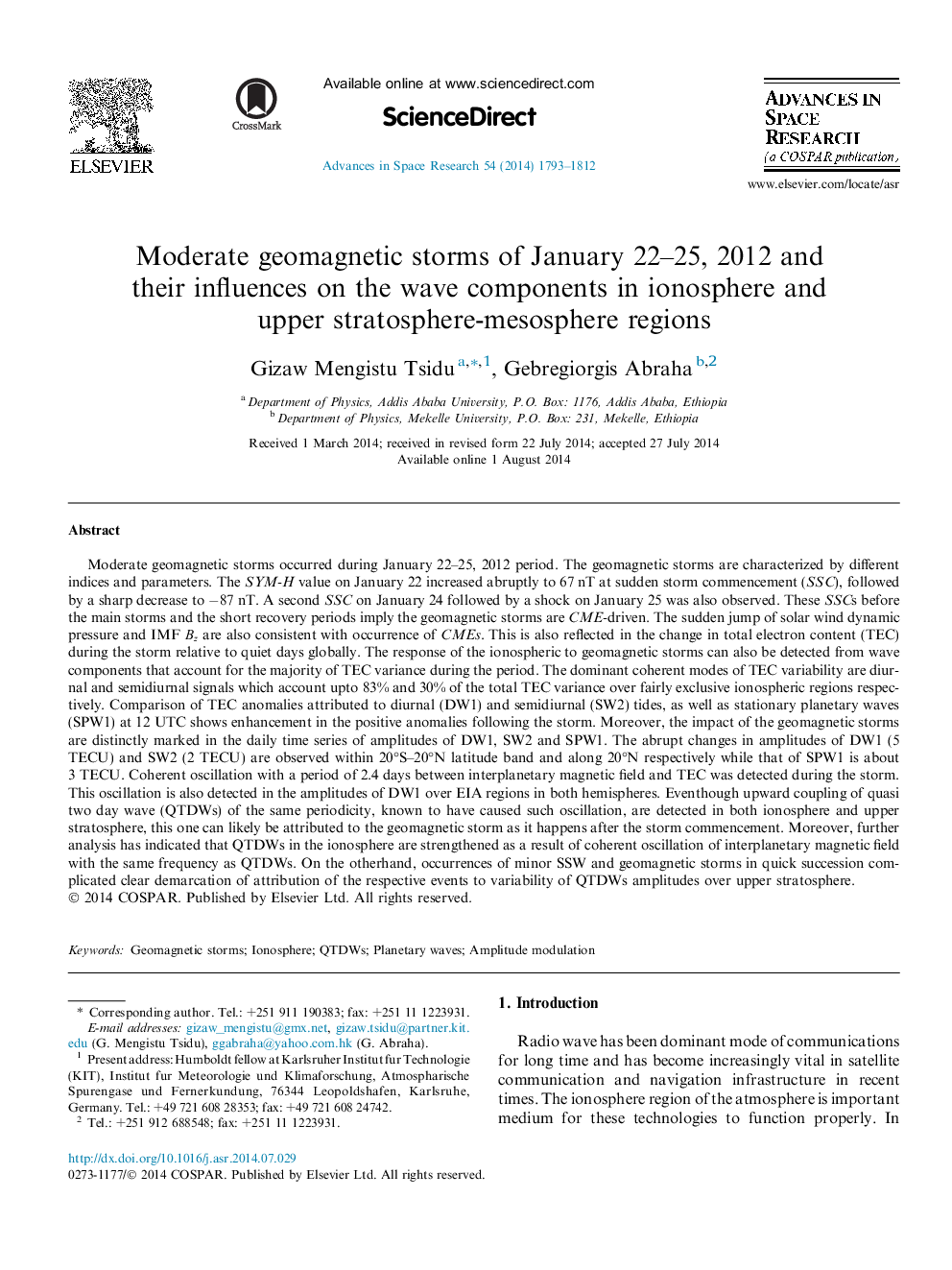| کد مقاله | کد نشریه | سال انتشار | مقاله انگلیسی | نسخه تمام متن |
|---|---|---|---|---|
| 1763845 | 1020027 | 2014 | 20 صفحه PDF | دانلود رایگان |
• Geomagnetic storms of January 22–25, 2012 period are driven by coronal mass ejection.
• Diurnal and semidiurnal TEC account for upto 83% and 30% of the variance respectively.
• Atmospheric wave amplitudes changed abruptly in response to the geomagnetic storms.
• Coherent oscillation of interplanetary magnetic field leads to enhanced QTDW in TEC.
Moderate geomagnetic storms occurred during January 22–25, 2012 period. The geomagnetic storms are characterized by different indices and parameters. The SYM-H value on January 22 increased abruptly to 67 nT at sudden storm commencement (SSC), followed by a sharp decrease to −87 nT. A second SSC on January 24 followed by a shock on January 25 was also observed. These SSCs before the main storms and the short recovery periods imply the geomagnetic storms are CME -driven. The sudden jump of solar wind dynamic pressure and IMF BzBz are also consistent with occurrence of CMEs. This is also reflected in the change in total electron content (TEC) during the storm relative to quiet days globally. The response of the ionospheric to geomagnetic storms can also be detected from wave components that account for the majority of TEC variance during the period. The dominant coherent modes of TEC variability are diurnal and semidiurnal signals which account upto 83% and 30% of the total TEC variance over fairly exclusive ionospheric regions respectively. Comparison of TEC anomalies attributed to diurnal (DW1) and semidiurnal (SW2) tides, as well as stationary planetary waves (SPW1) at 12 UTC shows enhancement in the positive anomalies following the storm. Moreover, the impact of the geomagnetic storms are distinctly marked in the daily time series of amplitudes of DW1, SW2 and SPW1. The abrupt changes in amplitudes of DW1 (5 TECU) and SW2 (2 TECU) are observed within 20°S–20°N latitude band and along 20°N respectively while that of SPW1 is about 3 TECU. Coherent oscillation with a period of 2.4 days between interplanetary magnetic field and TEC was detected during the storm. This oscillation is also detected in the amplitudes of DW1 over EIA regions in both hemispheres. Eventhough upward coupling of quasi two day wave (QTDWs) of the same periodicity, known to have caused such oscillation, are detected in both ionosphere and upper stratosphere, this one can likely be attributed to the geomagnetic storm as it happens after the storm commencement. Moreover, further analysis has indicated that QTDWs in the ionosphere are strengthened as a result of coherent oscillation of interplanetary magnetic field with the same frequency as QTDWs. On the otherhand, occurrences of minor SSW and geomagnetic storms in quick succession complicated clear demarcation of attribution of the respective events to variability of QTDWs amplitudes over upper stratosphere.
Journal: Advances in Space Research - Volume 54, Issue 9, 1 November 2014, Pages 1793–1812
